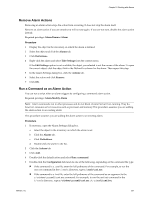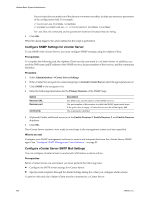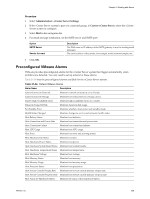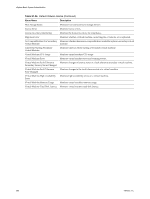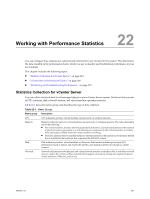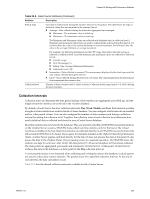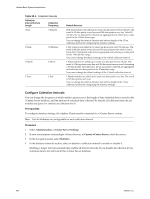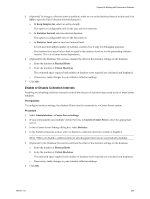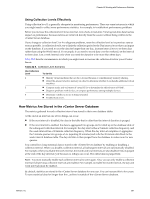VMware 4817V62 Administration Guide - Page 262
Data Counters, Table 22-1.
 |
View all VMware 4817V62 manuals
Add to My Manuals
Save this manual to your list of manuals |
Page 262 highlights
vSphere Basic System Administration Table 22-1. Metric Groups (Continued) Metric group Description System Overall system availability, such as system heartbeat and uptime. These counters are available directly from ESX and from vCenter Server. Virtual Machine Operations Virtual machine power and provisioning operations in a cluster or datacenter. For a complete list of all statistics available for ESX/ESXi hosts and collected by vCenter Server, see the PerformanceManager API documentation pages in the vSphere API Reference. Data Counters vCenter Server and ESX/ESXi hosts use data counters to query for statistics. A data counter is a unit of information relevant to a given object. For example, network metrics for a virtual machine include one counter that tracks the rate at which data is transmitted and another counter that tracks the rate at which data is received across a NIC instance. To ensure performance is not impaired when collecting and writing the data to the database, cyclical queries are used to collect data counter statistics. The queries occur for a specified collection interval. At the end of each interval, the data calculation occurs. Each data counter is comprised of several attributes that are used to determine the statistical value collected. Table 22-2 lists data counter attributes. Table 22-2. Data Counter Attributes Attribute Description Unit of Measurement Description Statistics Type Standard in which the statistic quantity is measured. One of: n KiloBytes (KB) - 1024 bytes n KiloBytes per second (KBps) - 1024 bytes per second n Kilobits (kb) - 1000 bits n Kilobits per second (kbps) - 1000 bits per second n Megabytes (MB) n megabytes per second (MBps) n megabits (Mb), megabits per second (Mbps) n megahertz (MHz) n microseconds (µs) n milliseconds (ms) n number (#) n percent (%) n seconds (s) Text description of the data counter. Measurement used during the statistics interval. The statistics type is related to the unit of measurement. One of: n Rate - Value over the current statistics interval n Delta - Change from previous statistics interval. n Absolute - Absolute value (independent of the statistics interval). 262 VMware, Inc.



